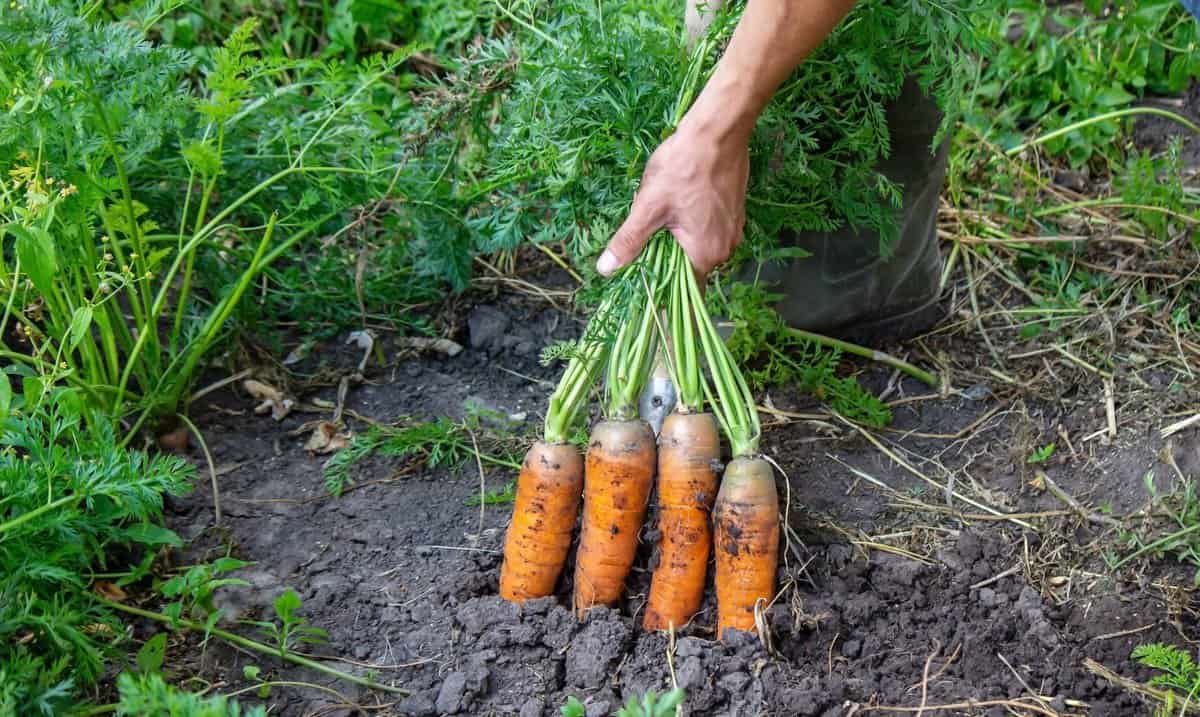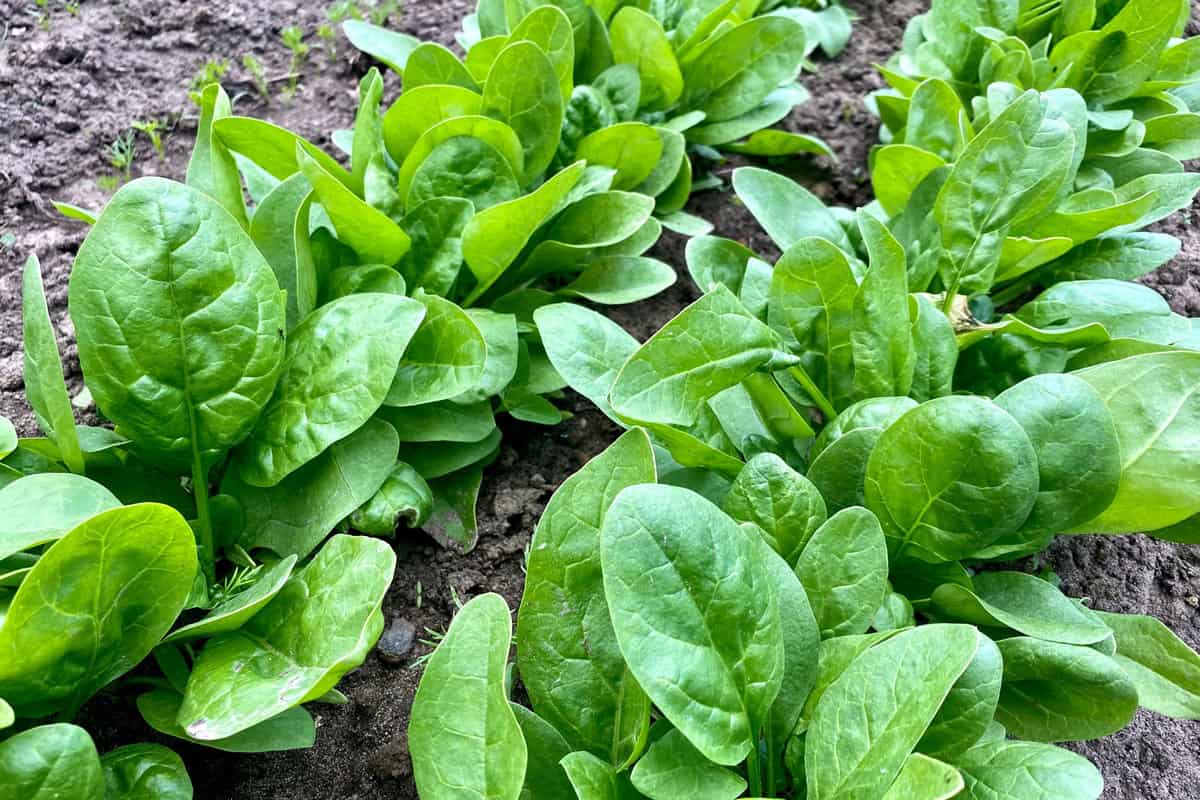As the summer heat dissipates, you might think your gardening days are over for the year.
But did you know that fall is actually a fantastic time to grow a variety of cool-season vegetables?
With the right preparation and planning, your fall garden can thrive, providing you with fresh produce well into the colder months.
In this article, we'll introduce you to 10 of the best vegetables to plant in your cool fall garden.
These veggies are not only delicious, but they're also easy to grow, making them perfect additions to your autumn garden.
Growing Tips for The Top 10 Veggies
One of the benefits of growing fall vegetables is their frost tolerance.
This allows you to extend your gardening season and enjoy fresh, healthy produce for a longer period of time.
Here are the top veggies that will thrive during the cool fall season.
1. Carrots
Carrots are a cool-season vegetable, making them a great choice for your fall garden.

To grow carrots successfully, plant them in deep, well-draining soil and keep them consistently moist.
Thin seedlings to allow for proper growth, and be sure to protect them from frost with a layer of mulch as the weather cools.
2. Spinach
Spinach enjoys the cooler temperatures of fall, and it can tolerate light frost.
Sow seeds directly into the soil with at least 4-6 inches of space between plants.

Water regularly and provide a well-draining, nutrient-rich soil to promote healthy growth. Spinach can be harvested when the leaves reach your desired size.
3. Lettuce
Lettuce is another cool-season veggie that thrives in fall. Plant lettuce seeds in well-draining soil and provide them with ample sun during the day.

To maintain moisture, water regularly and add organic mulch around the base of the plants.
4. Kale
Kale prefers cooler temperatures and even becomes sweeter after it experiences frost.

Start by planting kale seeds in nutrient-rich soil in a sunlit location. Thin out seedlings to give the growing plants plenty of room.
Water consistently, but ensure the soil remains well-draining to prevent root issues.
5. Radishes
Radishes grow quickly and thrive in the cool fall weather. Sow seeds directly into well-draining soil with adequate sunshine.

As radishes grow, thin them out to give the roots room to expand. Harvest radishes when they reach the desired size, typically within a month of planting.
6. Beets
Beets grow well in the cool fall temperatures and can withstand light frost. Plant beet seeds in loose, well-draining soil that is rich in organic matter.

Thin out seedlings as they grow, allowing for enough space between the plants. Water regularly, ensuring that the soil is consistently moist.
7. Swiss Chard
Swiss chard is a colorful leafy veggie that flourishes in the fall. Plant seeds in a sunny spot with well-draining, fertile soil.

Space seedlings to give them adequate room to grow, and water them regularly. Harvest the outer leaves as they grow to encourage continued growth.
8. Cabbage
Cabbage grows well in fall temperatures and can handle the occasional light frost. Choose a location with full sun and fertile, well-draining soil.

Plant seeds or transplants with plenty of space between them for head development.
Water consistently, and add a layer of mulch to help keep the soil moist.
9. Broccoli
Broccoli is a cool-season crop that enjoys the moderate temperatures of fall.

Plant seeds or transplants in a sunny location with nutrient-rich, well-draining soil.
Provide ample space for growth. Water regularly to maintain soil moisture, and use mulch around the plants to help conserve that moisture.
10. Peas
Peas thrive in cooler temperatures and can also tolerate light frost. Plant seeds in well-draining soil and provide a structure for climbing vines.

Water consistently to maintain the soil's moisture. Harvest pods when they are full and plump to enjoy the sweet and fresh-tasting peas.
Benefits of Growing Veggies in Fall
Growing vegetables in the fall has several advantages:
- Cool-season vegetables, such as kale and members of the cabbage family, prefer the cooler temperatures and can tolerate light frosts, which enhances their flavor.
- Pest pressure is often lower in the fall compared to the peak growing season.
- Cooler weather means less evaporation and potentially reduced watering needs.
- Planting veggies in the fall allows you to extend your gardening season and potentially increase the variety of produce in your garden.
Challenges and Solutions
Fall gardening doesn't come without challenges, but there's a way to go around them. Here are some tips:
Shorter Days
As the days get shorter, the amount of sunlight available for plants decreases. To address this, choose vegetables that require less sunlight or use season extenders, such as row covers or cold frames2.
Lower Temperatures
Some cool-season vegetables may be sensitive to extremely low temperatures. Consider planting frost-tolerant varieties or using mulch to keep the soil warm.
Inconsistent Weather
Fall can bring unpredictable weather, such as sudden temperature drops or heavy rainfall.
Keep an eye on forecasts and be prepared to protect your plants from extreme conditions with appropriate measures, like moving potted plants indoors or using a season extender.
Soil Preparation
If you're planting in an area previously used for spring and summer crops, remove all dead or diseased plant matter, including roots, before planting your fall veggies.
Enjoy Veggies Throughout the Cool Months
By choosing the right plants and providing the proper care, you can extend your gardening season and enjoy fresh, homegrown produce well into the cooler months.
Remember to select regionally adapted plants and plan for at least 8 hours of sunlight each day.
Incorporating compost or other soil amendments can greatly improve your garden's fertility and yield.
It's also important to ensure your garden bed is well-drained and has adequate space for proper growth.
If you enjoyed our list, check out these other great reads:
